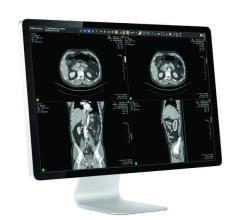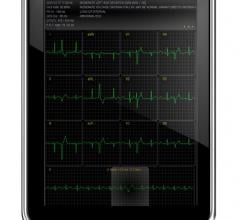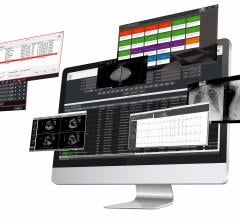Several vendors explained recent trends in cardiac PACS during the Radiological Society of North America (RSNA) annual meeting Nov. 29 – Dec. 3 in Chicago. Industry experts from Siemens, Infinitt, McKesson, Agfa, Visage, Thinking Systems, Brit, Fuji/ProSolv, Carestream, and ScImage all agreed on the following points:
More Than Pictures
“People will still say ‘I want a cardio PACS,’ but what they really want is the whole package,” said Robert Baumgartner, RN, product marketing director for McKesson’s medical imaging group.
Vendors say it is no longer good enough to just store and retrieve an image. As cardiac PACS evolve, the lines are increasingly blurred for what were previously self-contained IT systems for imaging, advanced visualization, cardiac image reports, echo image management, ECG management, inventory control, billing, and cath lab and hemodynamic reporting.
Vendors said new integrations in 2010 will include inventory control systems, computerized physician order entry (CPOE) and cardiac department scheduling.
“The trend is definitely moving toward a single solution, consolidated PACS,” said Lisa Braunreuther, global business manager, Agfa cardiology IT. She said the goal is to take isolated islands of information scattered between various software systems and consolidate it into one place.
“I see a lot of confusion in the cardio space,” said Chris Carr, marketing manager for ScImage. “There are separate systems for electrophysiology, cath lab, ECG, imaging, and vascular, and all these specialties are starting to see there is a benefit to consolidating their PACS and reporting systems.”
Cardio PACS are bridging the gap between these specialties and separate imaging and diagnostic modalities. “Cardiology is putting its people under a PACS administrator,” said Karen Boltich, RTR, RDMS, RDCS, RVT, senior cardiovascular product line manager for Fujifilm Medical Systems USA.
Workflow Efficiency
Improvements to increase efficiency are a key trend, Baumgartner said. Structured reporting can help auto complete final reports. Structured reports also allow data to be mined for clinical information used for registries or comparative effectiveness studies. He said these time-saving features are part of the physician “buy-in” for these systems.
Vendors are also improving efficiency by offering more customized report templates and how images are displayed, sometimes down to individual user preferences.
Connectivity
Vendors say connectivity is rapidly becoming the No. 1 end-user request – they want to be able to network the software and devices they prefer. This is easier said than done, and it is not enough to simply have HL7 or DICOM based systems. Several PACS vendors said they are working closely with industry partners to increase interoperability with “vendor-neutral” and “open-architecture” systems. They are also partnering to take advantage of best-of-breed software for advanced visualization and cath lab analysis modules.
Remote Access
Many cardio PACS are now offered as Web-based solutions that can be accessed anywhere without the use of dedicated workstations. Since many cardiologists work with multiple hospitals or have separate office locations, they want remote access to DICOM images, Braunreuther said. They don’t want reference images, they want full, high-resolution images and the ability to complete and file full reports, she said.
New features being rolled out include DICOM file sharing that can be e-mailed directly to a referring physicians, instead of overnighting hard copies or CDs. New viewers also allow PACS images to be launched directly from a patient’s EMR.


 March 06, 2024
March 06, 2024 



